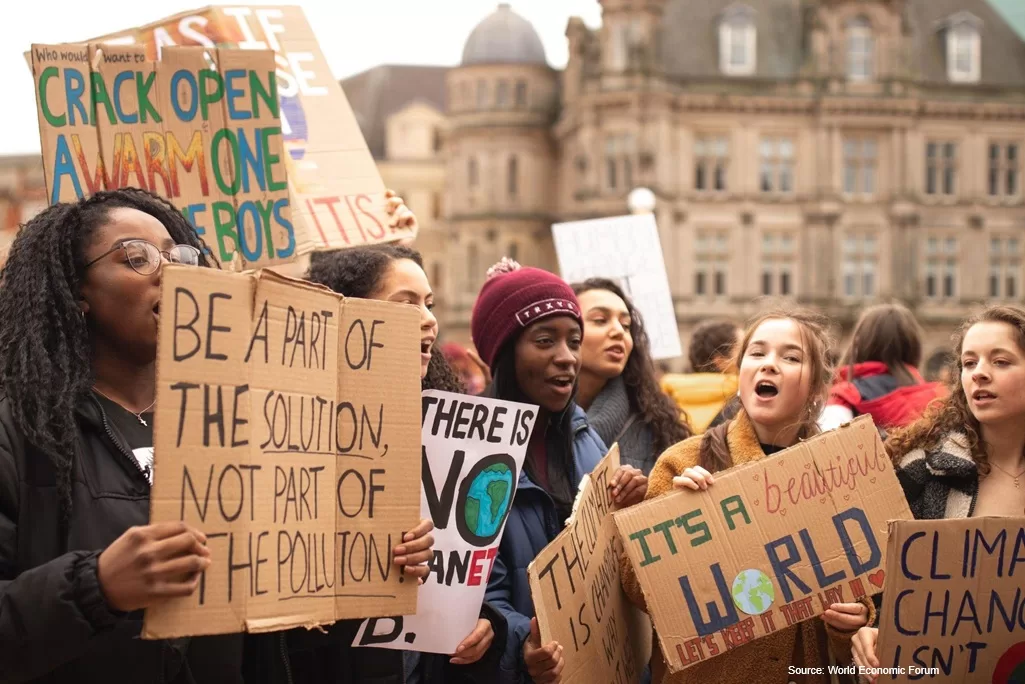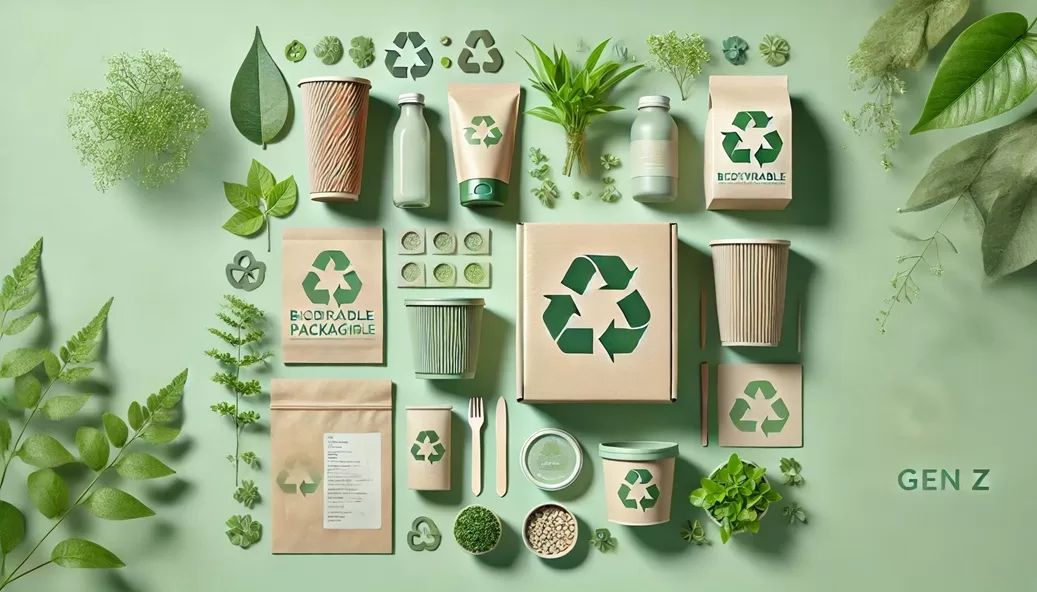Brand Strategy
How Sustainable Packaging Is Winning Over Gen Z: Trends and Insights for Brands

Gen Z, the generation born between the mid-199s and early 2010s, is shaking up the world. They are changing what it means to be a consumer more than any other group. Because they were born with smartphones, and when the climate crisis is getting worse, they care about where their goods come from and how they affect the world. It’s time for brands to go green, especially those that want to get the attention of Gen Z. This group that cares about the environment isn’t just looking at what’s inside the box; they’re also paying close attention to the box itself. Today, we will talk about the most popular eco-friendly packaging trends among Gen Z and why these trends are more important than ever.
Understanding Gen Z’s Environmental Values
You can never forget Gen Z’s spending power. This group has more than $140 billion to spend and a lot of energy on social media. They are changing the rules of brand loyalty. Gen Z differs from previous generations because they care about how brands handle problems like sustainability, waste, and climate change. Study after study has shown that over 73% of Gen Z are ready to pay more for goods that are better for the environment. That’s why they think of a company that cares about the environment and its values when they see eco-friendly packaging.
Gen Z, on the other hand, cares about more than just the earth. It’s also about being real. They’re sick of empty claims and want things to get done. One of the easier ways for brands to show they care about the environment is to use sustainable packaging. What kinds of packages do Gen Z like the most? Let’s start.
Top Sustainable Packaging Trends Gen Z Loves

Minimalist and Eco-Conscious Designs
You know that saying, “Less is more?” Gen Z is all about it. Sustainable packaging strips away unnecessary fluff and focuses on simplicity and purpose. This trend concerns using fewer resources and creating packaging with clean, straightforward designs that rely on something other than flashy colours or heavy branding.
Why it works: Gen Z appreciates honest, no-nonsense products, and minimalist packaging speaks to that. It says, “We’re not trying to distract you; we’re putting the planet first.” Plus, less packaging means less waste, which is a win for everyone.
Recycled and Upcycled Materials
Another trend Gen Z can’t get enough of is recycled and upcycled packaging. Brands use everything from recycled cardboard to reclaimed plastic, making a huge difference. Recycled materials cut down on waste, while upcycling turns leftover materials into something new and valuable.
Why it works: Gen Z wants to see brands try to reduce their environmental footprint. Packaging made from recycled materials tells them a brand is serious about reducing waste. Companies that use upcycled materials show they care about giving new life to old products.
Compostable and Biodegradable Packaging
If Gen Z could have their way, landfills would be a thing of the past. That’s why compostable and biodegradable packaging is a huge hit. Unlike traditional packaging that lingers in landfills for years, these materials break down naturally. Brands now use compostable plastics, cornstarch-based containers, and other biodegradable options without traceability.
Why it works: Compostable and biodegradable packaging directly responds to Gen Z’s concerns about pollution. It’s one of the few types of packaging they don’t have to feel guilty about because it simply goes back to nature.
Reusable Packaging Options
Imagine getting your item in a pretty glass jar or a strong tin box. You can use it again after it’s empty. This is what reusable packing is all about. It makes sense, reduces waste, and keeps people returning for more. Brands are responding to this trend by creating creative ways for customers to reuse their packaging.
How it works: For Gen Z, helpful, flexible answers are necessary. Reusable packaging is good for the environment and gives people something helpful that lasts longer than the product itself. Also, every time they use the bottle again, it reminds them of the brand.
Plant-Based Inks and Dyes
Ink has always been needed for printing, but brands are now switching to plant-based inks that don’t use dangerous chemicals or oil. These inks, usually made from soy, vegetables, or algae, make printing less harmful to the environment and can be composted with biodegradable packing.
It works because Gen Z likes it when brands pay attention to the little things. These picky kids are more likely to like a brand that uses plant-based paints because it shows that it cares deeply about the environment.
How Sustainable Packaging Expands a Brand’s Reach with Gen Z
Adopting sustainable packaging isn’t just a nice gesture—it’s a powerful way to connect with Gen Z and drive growth. Here’s how:
Building Brand Trust and Loyalty
For Gen Z, trust is everything. Brands that try to go green build trust faster and earn long-term loyalty. Sustainable packaging shows that a brand is committed to being part of the solution rather than adding to the problem. Companies like Crownhill Packaging, which offer eco-friendly options, can serve as excellent examples of this commitment. Gen Z consumers are likelier to stick with brands they feel share their values, which ultimately drives loyalty and repeat purchases.
Amplifying Social Media Buzz and Word-of-Mouth
Gen Z loves sharing products that align with their values, especially on social media. Sustainable packaging makes for a great Instagram or TikTok post, whether it’s a beautifully designed eco-friendly box or a smart box that can be used more than once. About 40% of online shoppers have shared unboxing experiences on social media. When Gen Z shares, they’re doing free marketing for the brand, reaching an audience that values these same sustainable practices.
Standing Out in a Competitive Market
With so many brands out there, standing out is tough. However, brands using sustainable packaging have a unique advantage. Eco-friendly packaging allows them to stand out from competitors, positioning them as leaders in social responsibility. For Gen Z, choosing brands that care about the environment isn’t just a preference—it’s a statement.
Tips for Brands Adopting Sustainable Packaging
Getting started with sustainable packaging doesn’t have to be complicated. Here are a few tips for brands looking to make the shift:
- Start Small: Begin with eco-friendly packaging materials like recycled fillers or biodegradable wraps, then work up to fully sustainable packaging as you grow.
- Communicate Clearly: Be transparent about your packaging materials. Use labels to tell customers if your packaging is recyclable, compostable, or reusable. Clarity builds trust.
- Get Gen Z Involved: Create opportunities for Gen Z consumers to give feedback on your packaging. Surveys, social media polls, or even packaging design contests can help build a connection with this audience.
Final Takeaways: Why Sustainable Packaging Matters More Than Ever
Gen Z’s preference for sustainable packaging isn’t just a trend; it’s the future. For brands, investing in eco-friendly packaging is more than a marketing move—a commitment to the values Gen Z cares about. When brands align with Gen Z’s environmental priorities, they don’t just win over customers; they gain advocates who will support and promote their brand for years.

















































